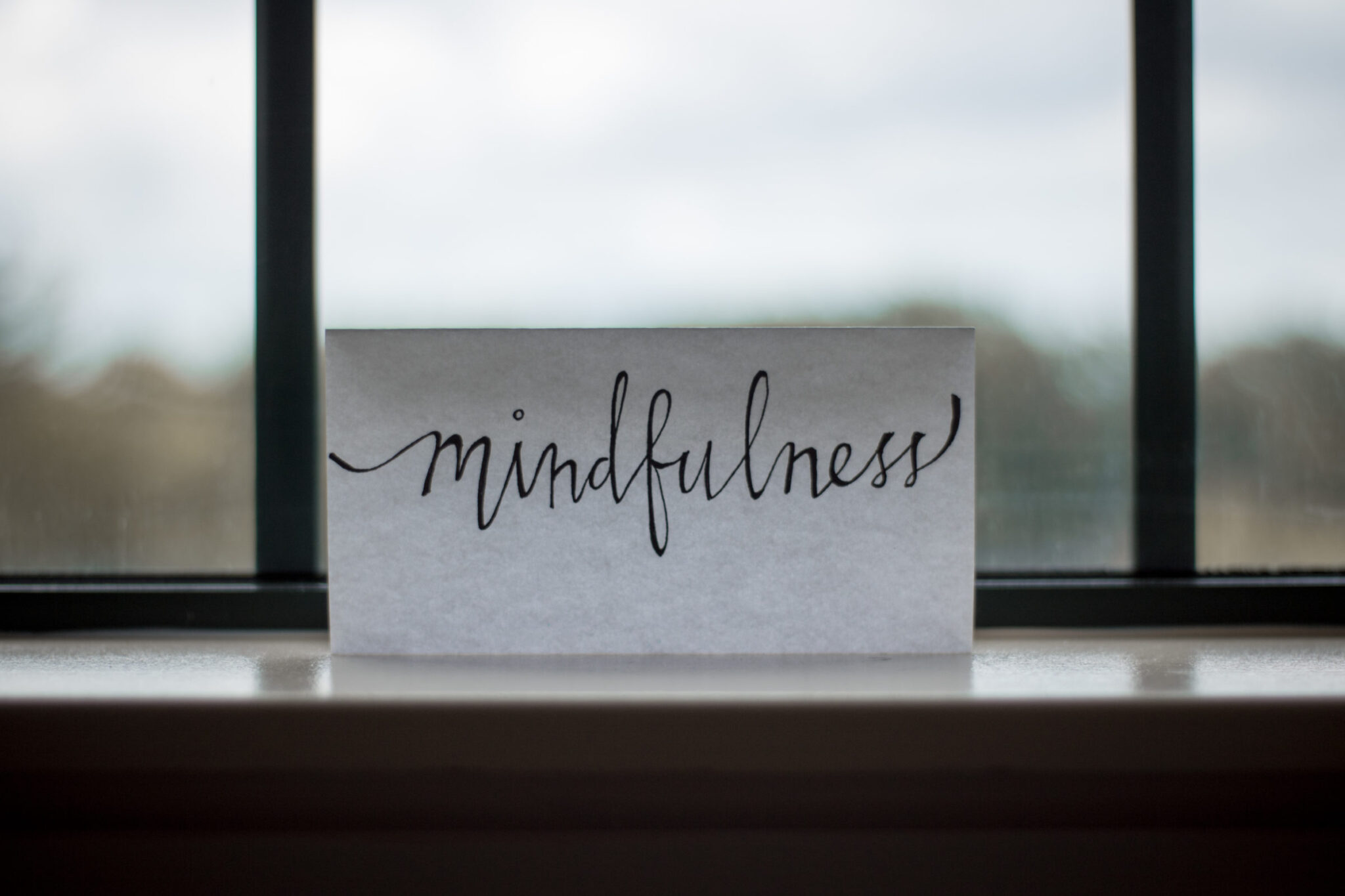Dementia and the benefits of mindfulness

Mindfulness has become a very popular and mainstream practice. You may even practice it yourself. In a nutshell, mindfulness is the ability to be fully present, aware of where you are and what you’re doing, without judgement. Mindfulness meditation can be practiced standing, sitting, lying down or walking and may prove beneficial to both you and your parent.
Mindfulness for daughters and sons
Mindfulness can help build and maintain your emotional resilience. The best way to engage in the practice is with a kind and gentle approach. The practice involves focusing on the present moment and lessens your thoughts about past mistakes or future worries. The mind becomes more alert, focused and less stressed.
At times you may end up working past your limits when supporting a parent with dementia. Mindfulness techniques can create a sense of self-awareness. Pausing to reflect on the level of your caregiving activities may allow you to make healthier decisions for your own wellness.
In fact, research suggests just that. Findings indicated that people who care for family members especially with Alzheimer’s disease and other dementias, experienced a decrease in perceived stress and mood disturbance when using the technique called Mindfulness–based Stress Reduction (MBSR). Another earlier trial found that MBSR was “more effective at improving overall mental health, reducing stress, and decreasing depression” than those who only participated in caregiver education and support interventions.
Mindfulness as new way of connecting
One of the major challenges that individuals with dementia and their family members encounter is that there is a need for new ways of communicating due to memory loss and other changes in thinking and abilities. In the study, mindfulness training was provided for those with early-stage dementia and their family member to show they can benefit from undergoing the training together. Through the mindfulness exercises participants discovered a novel way of connecting to one another. Try the following exercise and see how you connect with Mom or Dad.
Standing Breathing Exercise
To start
- Get your parent’s attention
- Say: “Hey Mom, wanna try something neat I learned? I could use your help.”
Demonstrate
- Say: “Face me and hold my hands Mom.“
- Stand in front of Mom and gently take both her hands in yours.
- Follow breathing pattern.
Breathing pattern
- Say: “Take a deep breath in through the nose and blow out with an “Ahhhh!”
- Release hands.
Ask mom to try
- Say: “OK Mom, now it is your turn to try.”
- Gently take and hold both her hands.
- Say: “ONE” and add no words or instructions.
- Simply gaze at her while still holding hands and demonstrate the breathing pattern.
- Say: “TWO” and demonstrate breathing pattern.
- Say “THREE” and demonstrate breathing pattern.
- Release hands.
To end
- After you each had a turn, shake out your arms and offer Mom a hug.
- Thank Mom for joining you and praise her for helping you to relax. Together you experienced an intimate moment of connection, movement and being in the present moment
Mindfulness and moderate dementia
Traditional mindfulness may not be possible with those living with moderate dementia but there has been success with adaptations made to accommodate their cognitive deficits.
Eleanor Silverberg has created a guide for family and professional caregivers on mindfulness exercises for dementia. She relays that people with moderate dementia know the present but their own version of “present” may be stuck in a past time in their mind. Her exercises encourage participants to keep their attention on what is going on around them now rather than what is being formulated inside their minds. Why not give her mindful exercise a go?
Sitting body awareness exercise
Silverberg uses the familiar childhood song “Head and shoulder, knees and toes” in this exercise. (Duration 5-7 minutes). Your parent may have difficulty focusing, their attention may drift, and they may even leave the exercise early—that’s OK.
To start
- Pull together 2 chairs facing each other. Take a seat in one chair and invite Dad to join you in the other chair.
- Say: “Ok Dad, come let’s sing together and move a bit.”
- Begin the song and action cycle. Sing these lyrics: ♬Head and shoulders, Knees and toes♪ Knees and toes ♬ Knees and toes♬. Stop the song there.
- While singing the lyrics, touch your head, your shoulders, your knees then toes. (Note, if you or your parent cannot reach the toes, simply point to the toes).
Ask Dad to try
- Once you have demonstrated the song and actions, encourage Dad to follow along.
- Say: “Now you try it with me”. Your parent may pick up the sequence of the song and actions quickly or it may take a moment for your parent to find their rhythm.
- Repeat the song and action cycle five times, this will complete ROUND 1.
Exploring body sensations:
Head
- Repeat the song and action cycle 5 times.
- Once you have done so, this will be ROUND 2.
- Next, pause and ask Dad one question at a time about the head.
- “Does your hair feel soft? dry? Is your scalp smooth? bumpy?
- Wait for a response.
- Spend 15-20 seconds on the head.
- Feel free to create your own questions about the head.
Shoulders
- Repeat the song and action cycle five times, this will be ROUND 3.
- Move the shoulders up and down and all around
- Now ask one question at a time about the shoulders and wait for a response. “Dad are they stiff? Is one side higher than the other?
- Spend 15-20 seconds on the shoulders
- Feel free to create your own questions about the shoulders
Knees
- Repeat the song and action cycle five times, this will be ROUND 4.
- Rest hands upon the knees.
- Ask one question at a time about the knees and wait for a response. Are they stiff and hard to bend? Do they creak?
- Variation: Try marching in place while remaining seated to bring attention to the knees, pause the march then pose your question.
- Spend 15-20 seconds on the knees
- Feel free to create your own questions about the knees
Toes
- Repeat the song and action cycle five times, this will be Round 5 and the final round.
- Wiggle toes and ask one question at a time about toe sensations. Are they cold? Are they hot? Are they sore and hard to bend?
- Wait for a response
- Spend 15-20 seconds on the toes
- Feel free to create your own questions about the toes
Adding variety
- Try singing the song slowly or speeding it up. You may even include the other lyrics “Eyes, ears, mouth and nose” and introduce more body awareness questions.
To end
- Thank Dad for joining you and praise him for the exercise no matter his level of participation. Together you experienced an intimate moment of connection, movement and being in the present moment
Try these exercises and let us know how it went!










I have been searching for new ideas for our Special Care Unit-10 residents with different types of dementia and different phases. This looks good-I will try.